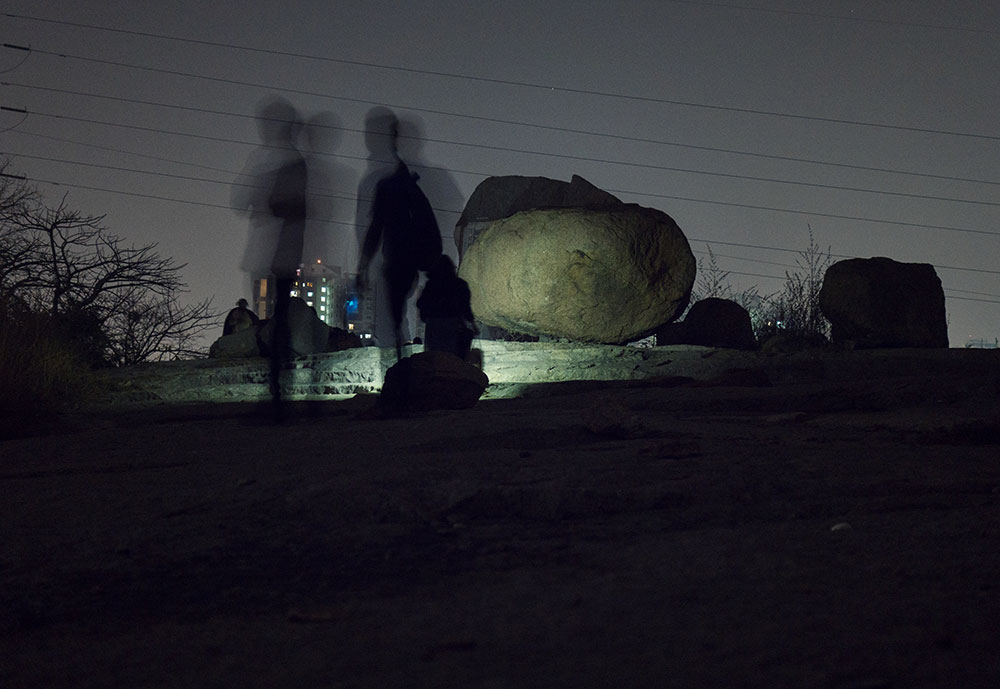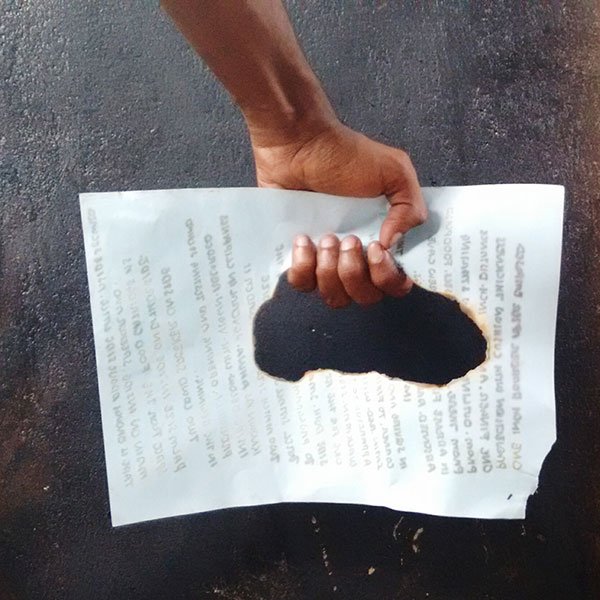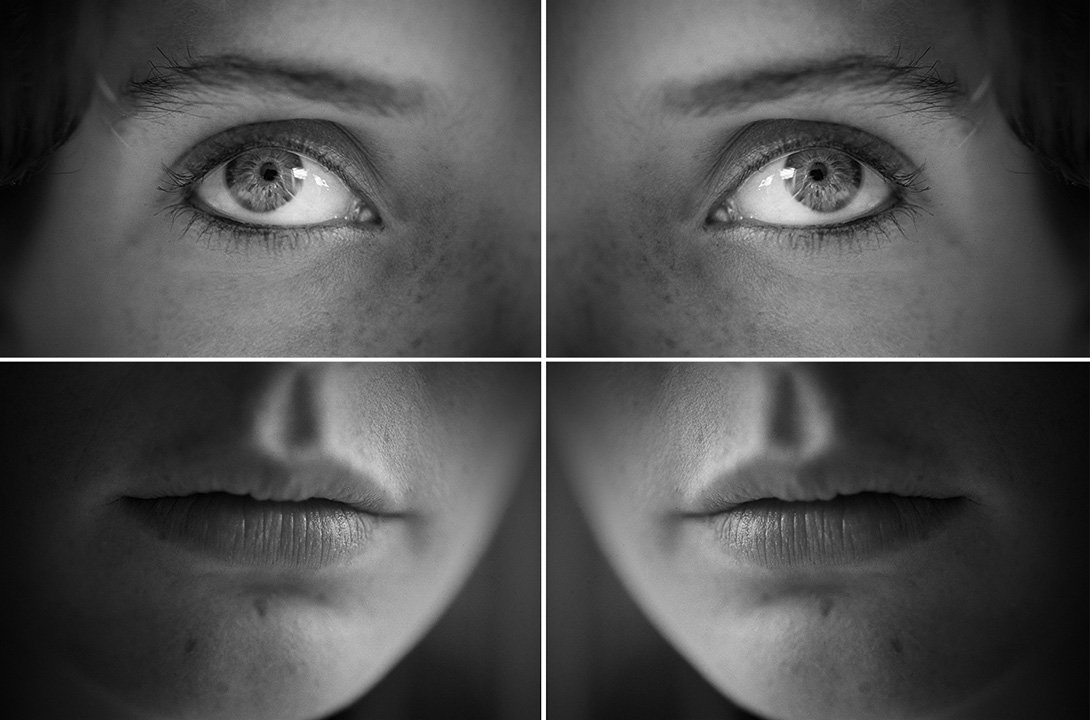Panorama
Photography and Beyond
Photo Mail presents
A panoramic view of
The art of photography’s
Interaction and
Interrelation with other
Art mediums such as literature
Architecture, and
Other visual media
Johny ML
writes about
Photography
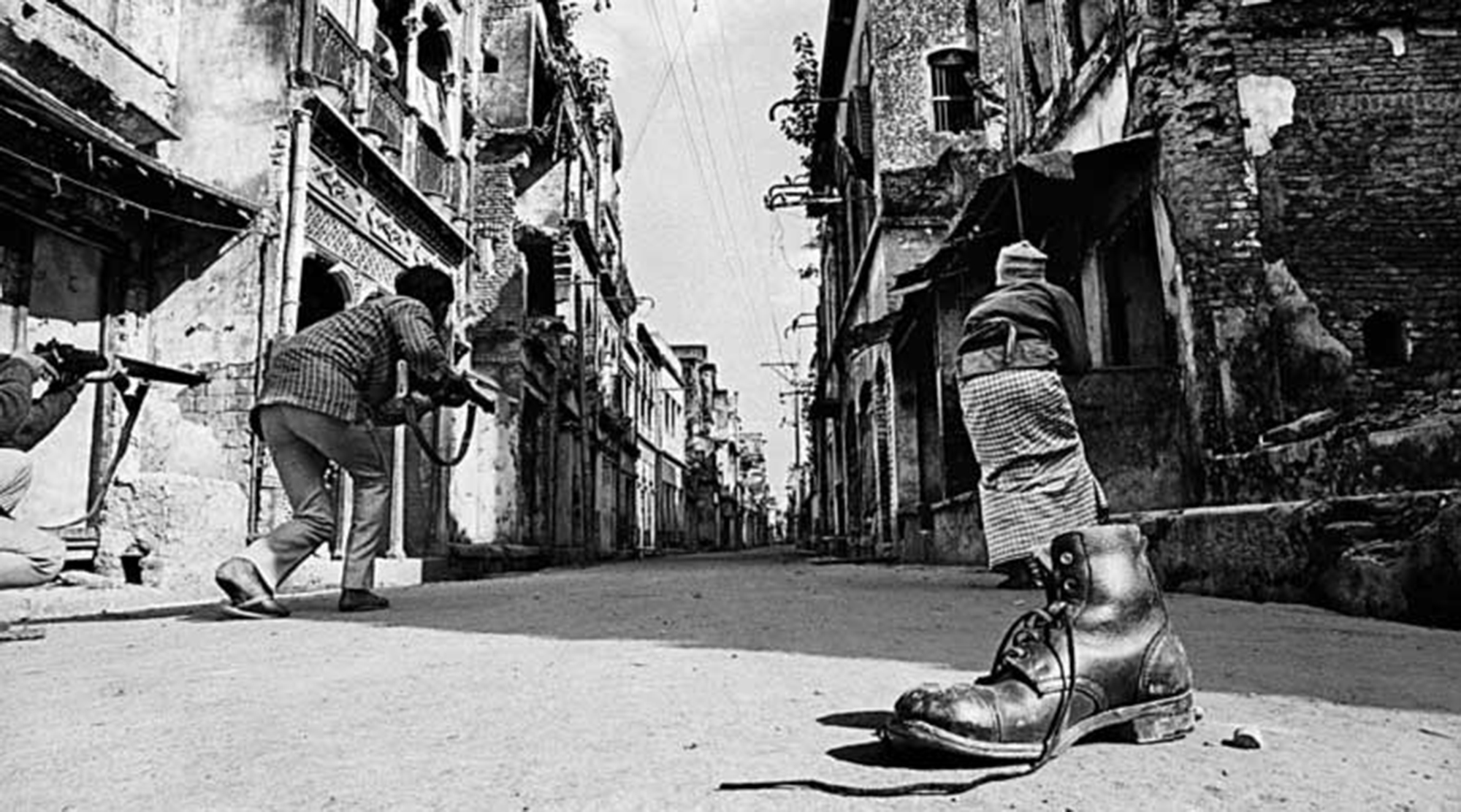
Bangladesh, a brutal birth © Kishore Parekh
Time, in terms of photography, is a series of unclicked or unregistered moments. Time stops at least for a second when the photographer clicks the button, and that particular moment becomes an event in itself. It carries within the weight of a performed history and an unraveled future. An event registered by a photographic moment becomes the time compressed beyond recognition, which ironically is called a recognizable image. Unrecognizable time turns out to be a recognizable image in a photograph and behaves absolutely irresponsible either to the image itself or to the unrecognizable time. The responsibility falls squarely back on the viewer who inadvertently before a photograph becomes a decipherer of sorts, an archaeologist by chance, with nothing but the knowledge of history at his disposal to dig further.
A photograph by Kishore Parekh, an image of a deserted street and two people, two freedom fighters in action and another fighter whose gun juts into the frame, with a single boot at the foreground, obviously tells us that it is a picture taken from some combat zone. Beyond that what exactly does the picture tell us? Perhaps, with no explanatory literature to go with it, the photographic image could be a stand in metaphor for any combat zone from any part of the world where daily life of the ordinary people is shaken up with the presence of soldiers in action. The deserted street and the invisible enemy however do not tell us whether the action is all about resistance or invasion. What is present also predetermines what is absent and the confusion, therefore the concentration of the image increases as the lack of information around the image thickens. Yet, the apparent opaqueness never leaves the viewer alone. He has to turn to history to unravel the secret of a photographic image.
In the case of the famous series ‘Bangladesh: A Brutal Birth’ by Kishore Parekh taken during the 1971 Indo-Pak War in which the Indian contingent of MuktiBahini (Freedom Fighters) liberated the East Pakistan aka Bangladesh, most of the images are supplemented with textual interpretations by Parekh himself. The abovementioned photograph comes from the same series and rather than the combat action what catches the viewers’ attention is the lone boot in the foreground. Martin Heidegger (1889-1976), the German philosopher had convincingly interpreted the worn out boots painted by Vincent van Gogh (1853-1890) and traced the working class pains and deprivations, a similar hermeneutical approach that John Berger (1926-2017) would take later in his landmark work ‘Ways of Seeing.’
Bangladesh, a brutal birth | Kishore Parekh | Video by Bangladesh Photo-Book Archive | Source: Internet
The lone boot is rather a disturbing image; much pain inducing than the aggressive and cautious posture of the freedom fighters backed up by the Indian Army (definitely Kishore Parekh is on the winning side as he was taken to the combat zone by an Indian army General in his vehicle). A closer look reveals that the boot does not belong to the fighters. They wear rubber slippers and are not in combat fatigue. The image tells something more; the Indian army gives the backup and ammunition to the native freedom fighters but does not fight from the front. The boot with the laces hanging loose is perhaps that of a Pakistan soldier who is forced to retreat and take cover behind one of those buildings or that of an Indian soldier killed by the enemy bullets whose body has been dragged away by the fellow Indian soldiers leaving the native combatants to continue with the fight.
‘Bangladesh: A Brutal Birth’was published by Kishore Parekh with the help of the central Government of India. Twenty thousand copies were published in 1972 and Parekh’s family holds only two copies of the book as revealed by his son Swapan Parekh. So today we can only make conjectures about the enigmatic boot in the foreground of the image. History comes to us heavily and all these conjectures cannot be far removed from the historical facts. The unrecognizable time becomes a recognizable image, leaving us to decipher the meaning of it further. A fifty year old photograph that it is, still with a recorded history, what imparted in the public domain generates an enigmatic aura around it, levitating itself into the realm of guess working. But no guess work could go in the right direction unless it is guided by the methodological framework of history. An image could arrest history and drag it to its place, causing the settling of the dust of confusion; an image could become an artefact despite its flimsy materiality or its ethereal digital non-materiality. An image is an artefact that gives clarity to history on the one hand and on the other hand if political will permits helps in rearticulating histories that have gone wrong.
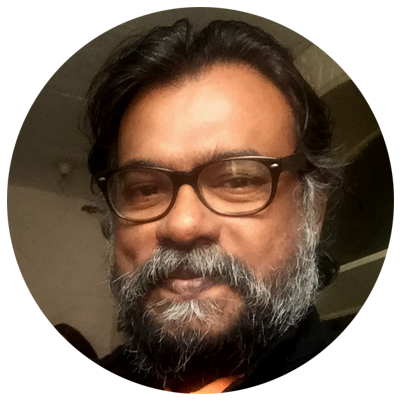
Johny ML is a writer, translator, art historian, art critic, art curator, editor of art magazines, poet and a prolific blogger. He has three post graduate degrees in Creative Curating, Art History and Criticism, and English Language and Literature. His writings related to arts, culture and politics have been published in several print magazines like Creative Mind, Art Illustrated, newspapers and weeklies in English and in Malayalam. He also founded and edited many popular online art journals. He has been an editor of the Art and Deal magazine also has guest edited Art Etc. He contributes to Art India Magazine, Creative Minds, Art Journal and many other exclusive art magazines. Currently he writes in Stance Magazine and naradanews.com. He is one of the pioneering curators in India. He has authored eight independent books so far and has contributed to various volumes, and translated thirteen books so far. Johny ML lives and works in Trivandrum, Kerala.
Published on December 21, 2020
Share
Related Articles
A Sense of Dislocation
Indian photography hasn’t seen many such explorations that interact and intersect with other media such as light art. But this has started to change in the last couple of years, with a few photographers trying to do light painting; and it is in this context that Joyel K Pious and Gaurav Rachamalla’s collaborative photo project becomes striking. Although this style is popular in the west, this collaborative project stands tall and distinctive amidst the usual Indian street and documentary photographs. It probes the philosophical underpinnings that are intrinsic to the medium itself as well as pose several questions related to urbanisation.
On Ajith Nedumangad’s Photographs
It is the sheer absurdity of the sculptures created and photographed by Ajith that hits the viewer right from the off – juxtapositions (reminiscent of the Dadaists and Surrealists) in which materials and the forms they are used to create are often in conflict with each other and, at other times, are self-referential in a darkly humorous manner.
On Photography, Remembering Susan Sontag
On Susan Sontag, a poem by famous Malayalam-English poet N Ravi Shankar


